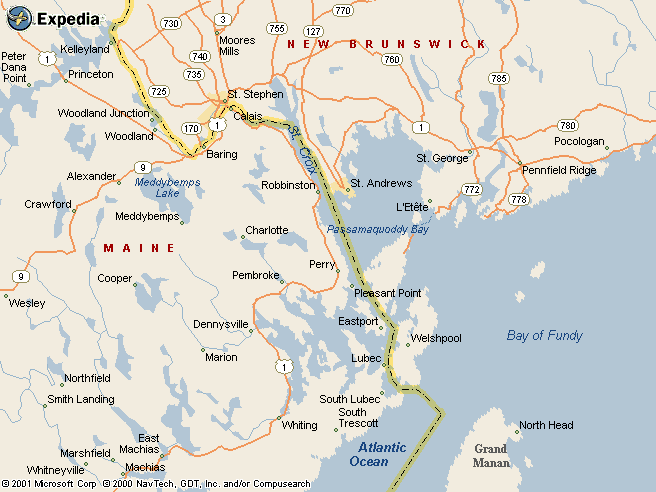

The city in which I grew up is located on the border of Maine and New Brunswick, Canada. Besides being exceedingly picturesque and unspoiled, this region experiences the highest tides in the United States. As table 1 displays the tidal change on 28 March 2001 was about 19 ½ feet over a 6-hour period.

Source: National Oceanic and Atmospheric Administration, 2001
http://www.co-ops.nos.noaa.gov/data_retrieve.shtml?input_code=000111111vwl&station=8410140+Eastport+ME.
Table 1: Tidal Information for Eastport Maine
It was this tremendous tidal shift that caught the attention of hydroelectric engineer Dexter Cooper, who honeymooned on Campobello Island. Upon observing the massive amounts of seawater (70 billion cubic feet) entering Passamaquoddy Bay with each incoming tide, Dexter got the idea of harnessing the tide's energy to produce electricity. Cooper was successful in enlisting the U.S. federal government in funding the project.
Cooper's idea was to dam off both Passamaquoddy Bay and Cobscook Bay, refer to Figure 1. Gates and dams in Passamaquoddy Bay would trap the incoming tide. Then, the water would be allowed to escape through turbine generators located at the isthmus on Moose Island, Eastport, with the water escaping into Cobscook Bay, where it would be held until low water. At that point, the water would be let out into the Bay of Fundy via another set of gates.
The project was begun, headquartered at Quoddy Village, Eastport, with tidal dikes built between Treat Island (Eastport) and Dudley Island (Lubec), and from Pleasant Point Passamaquoddy Reservation out to Carlow Island (Eastport) and then on to Moose Island, Eastport. Other dikes were planned, but were never constructed.
Figure 1: Map of Passamaquoddy Bay
http://www.expedia.com/pub/agent.dll?qscr=mmfn
U.S. national politics ended the funding for the project, although attempts were made--through President Eisenhower's term in office--to revive it. While still technically feasible, the project is seen as impractical, considering the impact on the fishery and environment, along with current costs for completing the project.
Based in part to the energy shortages being experienced in the Western United States, this project might be worth readdressing. Although we in the Northeast are not feeling the effects of these brownouts and souring energy prices today, I am sure that the residents of California were caught off guard.
Submitted to and posted by Anthony Benoit
April 9, 2001
Top | Back | Explorations | ENV 1100